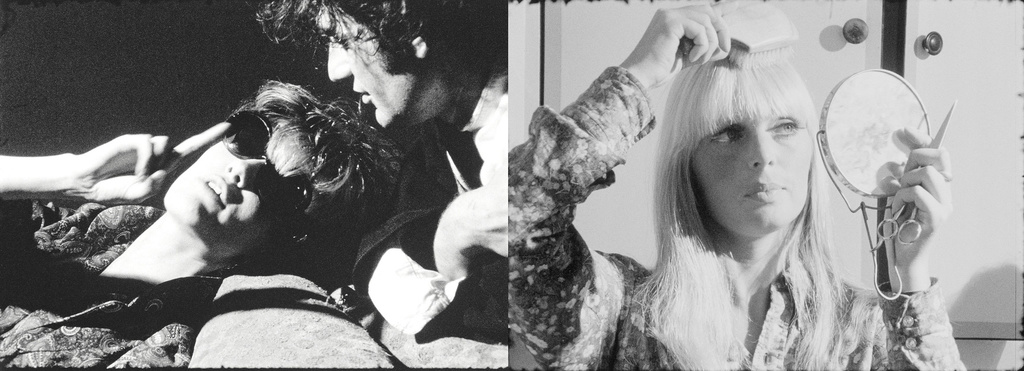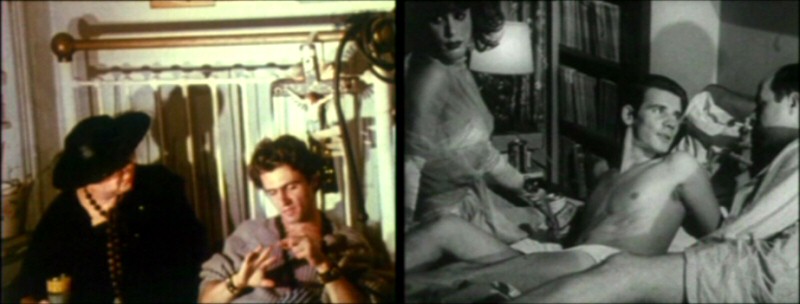Quest Status: 686 /1000
TSPDT Rank #162
Seeing a 30-minute Andy Warhol film in a movie theater can be a test of one's patience, so it stands to reason that a 210-minute one would be really tough going (let's not even bring up Empire). However, watching Chelsea Girls at home gives you the option of digesting it in pieces. It's a collection of 12 episodes, about 33 minutes each, with two segments at a time shown side by side. As a fan of structuralist cinema, I was more interested in how this would have been presented in a cinema than in the content of the film itself - a fairly tedious compendium of degenerate behavior and drug-fueled rants.

Andy Warhol apparently intended that any two of the 12 episodes could be paired in whichever the combination the projectionist chose, with sound projected randomly by one of the two projectors. In theory, this would have allowed for many possible viewing experiences. The projection order described by Warhol's friend and occasional collaborator Jonas Mekas in his contemporary review of the film suggested an experience in which the initial reels were all black-and-white, with the color reels creating a "climax of terror" at the tail end of the film.

The Italian DVD release of Chelsea Girls, however, fixes the 12 episodes into a set running order, with the color and B/W reels occasionally paired together. There are many moments in which the pairings are visually interesting - the film was obviously made with an artist's eye and the pairings for the DVD were given a lot of thought. Still, as I watched the film, I frequently wished that there would have been more thought given to the structure of the film. The seemingly random dispersion of sound leads to long stretches of silence and makes episodes without any sound seem inconsequential - rather than giving them an edge of mystery or intensity as they could have if the distribution of sound and pairing of images was more premeditated.

The content also feels inconsequential from a contemporary viewpoint. Maybe in 1966, viewers would have been shocked to see real depictions of drug use, homosexuality, and general debauchery after only hearing about those things in passing or reading sanitized versions in crime novels. But today, there's very little that's shocking about Chelsea Girls, except sometimes its capacity to annoy or bore the viewer. Watching the pathetic characters on screen whine and abuse each other started to wear on me after a while. By the end, I started to wonder: Did this film come out of Andy Warhol's contempt for the underground scene on which he thrived? Or maybe it was just an attempt to show middle-class Americans a slice of the underground as a way of shocking them out of complacency. Either way, today it just seems like a relic of an almost forgotten past, a portrait of lost souls trapped in webs of their own making and (except for Nico) now lost to history.

No comments:
Post a Comment